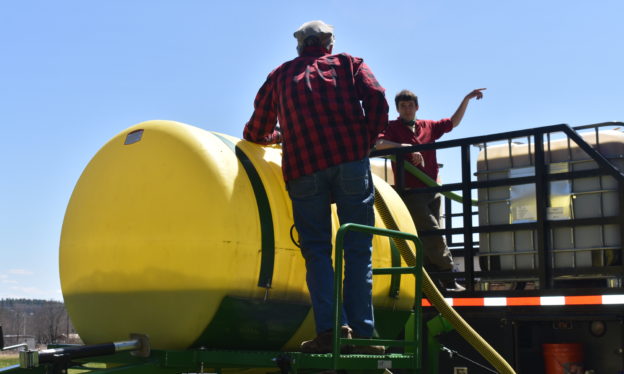Back to all articles
Farm Research

Our partnership with local farmers using sanitized urine on their hay has demonstrated that it can effectively replace synthetic fertilizer when applied under appropriate conditions. However, nearly all the nitrogen in urine rapidly converts into ammonia, which is prone to loss by evaporation. Although research exists on ammonia loss from animal manures, there are currently no research-based guidelines for acceptable methods and conditions for surface application of urine-derived fertilizer (UDF) on hay. We have just published a final report on research funded by a grant from the Sustainable Agriculture Research and Education program of the USDA to address this issue.
We conducted field trails to quantify ammonia losses under a range of environmental conditions, using different UDF products. We also conducted site visits and interviews with ten diverse livestock farmers, strategizing effective ways to incorporate urine-based fertilizers in farm operations. The ammonia volatilization trials generated recommendations for best practices to minimize ammonia loss, while the site visits confirmed that farmers from a wide range of farm types are interested and open to using urine fertilizer for pasture and feed crops, both for its environmental benefits and its nutrient value. They shared valuable suggestions for UDF integration into current nutrient management practices. Both aspects of the study inspired a range of additional areas of research we hope to investigate going forward, to help support more widespread use of UDFs.

